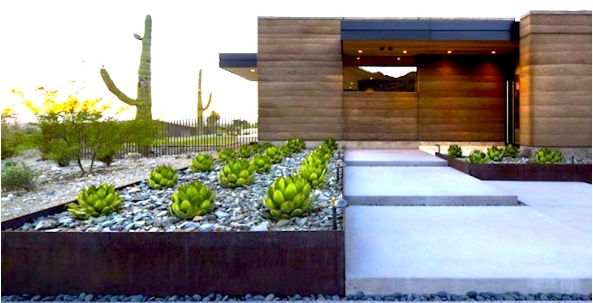Rammed earth is another natural material making a giant comeback. From tiny hut-like dwellings in the dry regions of Africa to the wet northern European region—this ancient technique has been used around the globe since 5,000 B.C. Using natural materials such as earth, chalk, lime and gravel—the rammed earth technique can be labor-intensive to construct. Wall construction begins with a temporary wooden frame that acts as a mould for the desired shape and dimensions of each section. The earthen materials are then dampened, poured into the sturdy mould, and compressed into batches that are gradually built to desired size. The result is a solid, durable, sustainable wall of earth.
One wonderful characteristic of a rammed earth structure is its ability to regulate temperature—absorbing heat during the day and releasing it at night. Another huge bonus is that rammed earth structures last indefinitely. That’s right—forever. Finally, it’s estimated that rammed-earth structures can be built for around two-thirds the cost of a standard frame home (after all, dirt is dirt cheap).
Today, it estimated that around one third of the world’s population live in mostly low-rise earthen dwellings in less developed countries. However, in more urbanized areas with sustainably-oriented architects at the helm, rammed earth is experiencing quite a revival. Regardless of vicinity—rammed earth is a wonderful earth-centric way to leave a lighter footprint.
Pictured here is a wonderfully modern interpretation of this very ancient technique by Kendle Design. This glorious Quartz Mountain home captures the stark beauty of the Arizona Dessert. For more visit kendledesign.com.







